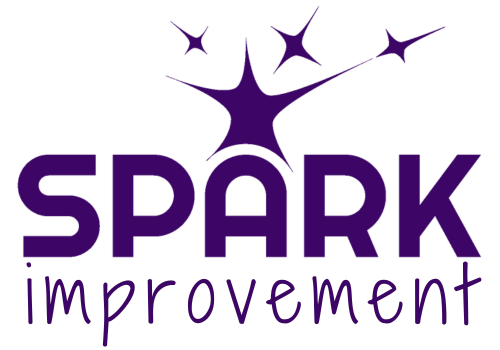What is the Improvement Kata?
Please note this article has been superseded. The new version can be found here.
In my last article I presented a diagram which is my answer to the question ‘What is Kata?’. I depicted Kata as the underwater piece of the ‘Lean’ iceberg.
Today I’d like to go a bit further and answer the question ‘What is the Improvement Kata?’.
The Improvement Kata is a four-step model which helps us to think and act scientifically. It encourages us to take small, intentional steps towards our goal or challenge.
My interpretation of this model is shown below.
Step 1: Understand the Direction or Challenge
‘Where do we want to get to?’
I have illustrated this as a flag at the top of a mountain.
The fact it is up a mountain indicates that it is not easy to achieve. This is a stretch, a true challenge. It might seem impossible, a little scary.
The point is you do not know how you are going to do it.
I like to make sure that my learner has a clear, concise, memorable challenge statement that they can keep in mind. They can keep referring back to this as their ‘north star’.
Step 2: Grasp the Current Condition
‘Where are we now?’
This step is about clearly understanding where we are in relation to the challenge.
In my picture you can see a path leading up to the mountain. It is not a straight, easy path. It is cluttered with obstacles.
It would be easy at this point for our learner to focus on that flag up at the top of the mountain and start walking in a straight line towards it.
But by focusing so hard on the end goal, they would likely eventually trip over (or fall into) some of the obstacles.
Instead, we want the learner to take a look around where they are.
Look up and down.
Mark the spot.
The critical thing at this stage is to take the time to collect data, and really study and analyse the current situation.
Step 3: Establish the next Target Condition
‘Where do we want to be next?’
A target condition is the next place you want to get to on the way to your challenge.
This short-term goal narrows your focus.
Rather than being overwhelmed by the longer-term challenge, our learner can concentrate on where they want to be in the next 1-3 weeks.
They do not need to worry about the whole journey, they just need to focus on the next ‘leg’.
See that next yellow flag – it is in sight, not too far away, but the learner can see it is not easy to get to.
Once they get to the target condition, then they re-orientate, check the direction in relation to the challenge, consider what they have learned on their journey so far, and then set another short-term target condition.
Step 4: Experiment towards the Target Condition
Once the target is set, then then our learner can start moving forwards and experimenting.
They can start to look for obstacles in their way, and then take steps to overcome them.
I’ve drawn a few different obstacles on the path.
Some might seem difficult from a distance, but when they get up close they realise actually they can just move them aside easily.
See that big clump of trees over the path? The learner will find it is easy to walk through them.
Some might seem easy from a distance, but when they get there they realise actually they are a big problem.
See that crevasse before the first target condition? From the start it seems they can just step over, but once they get closer they will realise it’s a big gap. Maybe they can build a bridge, maybe they walk off the path, maybe they take a running jump (!).
Whatever they try, they will do it in a structured scientific manner of experimenting, supported by their coach.
The coach!
Notice the coach is stood by the side of the path, supporting the learner on their journey.
They can help the learner identify the challenge, help them grasp their current condition, help them set their next target condition.
And, of course, they can help them experiment their way forwards, discovering obstacles and new knowledge along the way.
See in their hands I have drawn a torch and a green card?
The torch is for them to use when they need to help their learner see. When they need to shine some light on what’s going on.
The green card is the Coaching Kata – a set of concise questions used by the coach to help the learner stay in the Improvement Kata model.
Next time I will introduce the Coaching Kata, and explain how the two link together.
Was this helpful? Please let me know in the comments!
This article is the third in a series:
Article 1 – ‘My Journey to Kata’ – gives some context to my background in Lean and my discovery of the world of Kata
Article 2 – ‘So What is Kata?’ – aims to explain what Kata is, and where it comes from.


